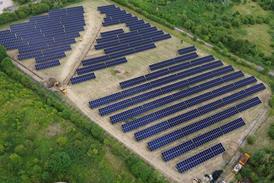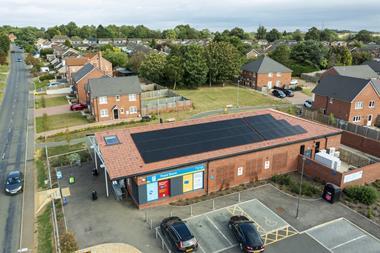
Mr Kipling’s iconic cakes could soon be mixed by the sun, thanks to a two-year £2.1m investment at Premier Foods’ Carlton Bakery.
The site, a major local employer and longstanding part of the community for over 50 years, is now home to a new solar energy farm following a major investment by the company.
Installed on vacant land within the site, the 2.2mw solar farm spans 2.9 hectares and features 3,500 panels. Once fully operational next month (November), when the sun is shining it will have the potential to supply nearly three quarters of the site’s electricity needs at peak production, powering everything from mixers and packaging machinery to lighting and office equipment.
The Carlton Bakery is one of the region’s largest food production facilities, employing up to 1,000 people at peak production. The solar project is expected to reduce its carbon emissions by 468 tonnes per year and deliver savings in annual energy costs, supporting the long-term resilience of a key local business.
Nick Brown, ESG director at Premier Foods, said: “Our Carlton Bakery was the largest purpose-built bakery in the world when it opened in the 1970s, and it remains the biggest bakery in the UK. This investment ensures it’s part of a more sustainable future.
“By generating more of our energy needs on site, we’re not only reducing our carbon footprint but making our operations even more resilient. It’s also positive that the solar farm has the capability to potentially export electricity back into the local electricity grid, when we are producing more electricity than we need.”
This move forms part of a wider programme of solar investment across Premier Foods’ manufacturing sites, including a £0.5m system at its Stoke bakery and a further £0.5m project which is underway in Ashford and will be switched on in the coming months.
As part of the project, Premier Foods worked closely with local planning and ecology specialists to protect and enhance the area’s natural environment. The company has developed a ten-year biodiversity plan, which includes a new planting scheme around the site to encourage local wildlife.
































No comments yet